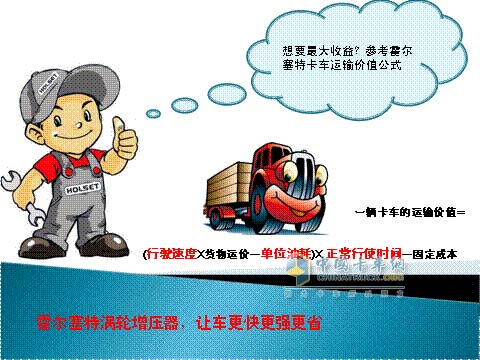In the past one or two years, the profitability of logistics enterprises has further narrowed, and competition has increasingly tended to be fine-grained. The margins at several points in the industry are reflected in the fact that there may be a considerable spread in external quotations, so logistics Only with the ability to refine operations can companies possess core competencies and embark on a healthy and sustainable development path. The car is one of the core elements of the logistics industry. The focus of refined operations of logistics companies must also be the car. What kind of models are purchased and what kind of parts are replaced is not only of concern to each driver, but also of each logistics company. The price level of the procurement target, the overall cost performance, and the durability are not only related to how much value each vehicle can create, but also determine whether the logistics enterprise can achieve sustainable development. Only by paying attention to the details, can we create the maximum value for each car. How to create maximum value? Every driver and logistics company has a set of experience, but lacks a standard for quantitative analysis. Based on this demand, Holset has summed up his experience in customer service over the years and put user requirements into the system. Refinement and summarization, the truck value formula is proposed, ie the transport value of a truck = (speed of travel * freight rate - unit fuel consumption) * uptime - fixed cost. Only by using the three elements of the truck's speed, uptime, and unit fuel consumption can the maximum value be created. According to insiders, one of the most common unit profit calculation methods for trucks is calculated in tons of kilometers. The unit profit of a car is equal to the ton-kilometer revenue minus the ton-kilometer cost. Profits are generated just under the wheels of a truck that keeps running. Some car owners and companies often work hard at "kilometers" to reduce their ton-kilometre cost, or to overload or buy relatively low-priced vehicles and sub-factory parts at the same level. As everyone knows, this choice is at the expense of the overall performance and service life of the vehicle. Abandoning high speed, long running time, and low fuel consumption is equivalent to giving up the truck's maximum value. With Holset's formula for trucking value, logistics companies can easily take a long-term perspective, and it is easy to gain insight into the "high savings" that are behind the loss. Master Zhang is a driver who is affiliated with a logistics company in Shenyang and runs between Shenyang and Beijing all year round. His earliest driving was a Dongfeng 153 Hepingchao truck. The vehicle was equipped with a Cummins 180-horsepower engine and an original Holset turbocharger. The fuel consumption was about 23 kilometers per hour at full load and the vehicle power was relatively strong. Maintenance has not been overhauled except replacing the engine's belts, tubing and other small parts. After 1 million kilometers of driving, Master Chang replaced a turbocharger at a roadside repair shop with a deputy factory. It was originally thought that the vehicle was quickly scrapped and saved money for a cheaper one and used more of the economy, but it was precisely this time that the "economic mind" left a deep impression on him. After the replacement, Master Zhang always feels uncomfortable driving, and when he pulls the goods, he feels empty, and he feels that the power is not enough. The fuel consumption is more like a thermometer placed in the boiling water. He walks up and burns in a panic. According to Master Zhang, the highest One hundred kilometers burned 32 oils. What did not expect was that this was just the beginning, leaving him unexpectedly still behind. The car opened about 170,000 kilometers. One day, Master Zhang returned from Beijing. The car suddenly collapsed. He pulled it to a repair station and found that the replacement of the turbocharger was not strong enough to cause the shaft to break and the engine was broken. He was so damaged that he regretted it so far. After replacing the turbocharger of the auxiliary plant, we did not say that the fuel consumption rose. We also found that the vehicle completely stopped cooking and delayed normal operations, causing huge losses. Now, Master Zhang has opened 290-horsepower Auman, and the original vehicle is also a Holset turbocharger. He said that if the turbocharger is to be replaced in the future, the original Holset turbocharger will be used. Because of the momentary "economic", they will suffer losses. Fine management is fine in advance, detailed in the process, detail management, excellence, only to achieve refined management, companies can develop in a healthy and orderly manner. Taking a small turbocharger as an example, international brands such as Holset have industry-leading technology, and their products and vehicles have better matching and overall performance is more secure. According to the professional road test, it is estimated that its supercharger can save 4.97 liters per 100 kilometers, 11% more than similar products, which means that for every driver, it can save about 10 tons of oil per 250,000 kilometers, which can save about 70,000 yuan. High-yield = high-income - low-cost, under the same car conditions, Holset's low cost of use has already provided owners with a large income advantage. There is such a large gap between bicycles, logistics companies only pay attention to detail management, in order to get a good chess game of fine operation, one step ahead, step by step to win. Electrode holder and Earth clamp Earth Rod Clamp,Copper Earth Clamps,Welding Earth Clamp Prosper Industry And Trade Co., Ltd. , http://www.pxweldingmachine.com